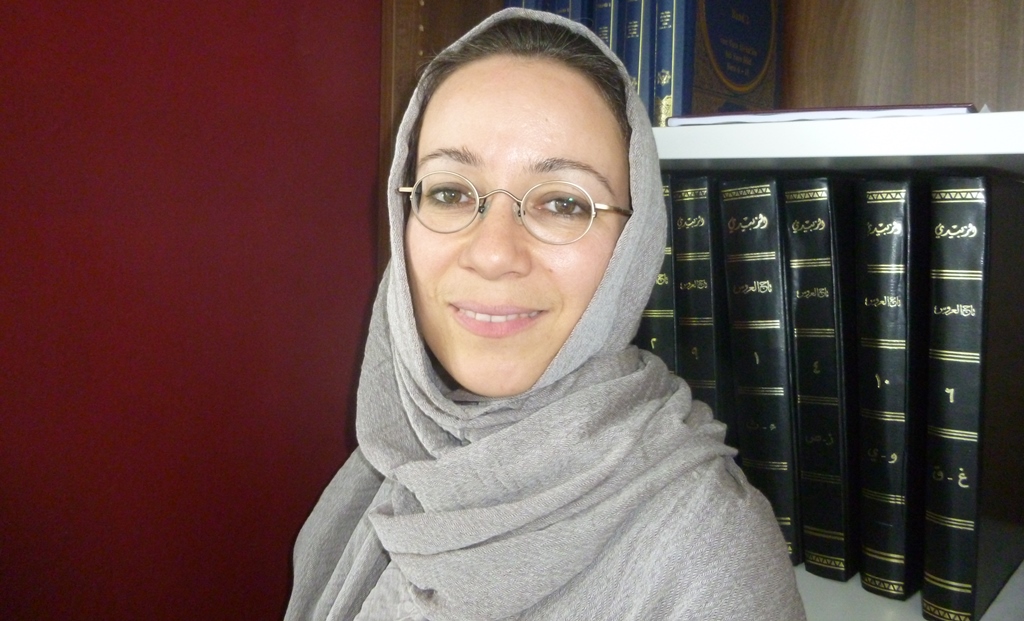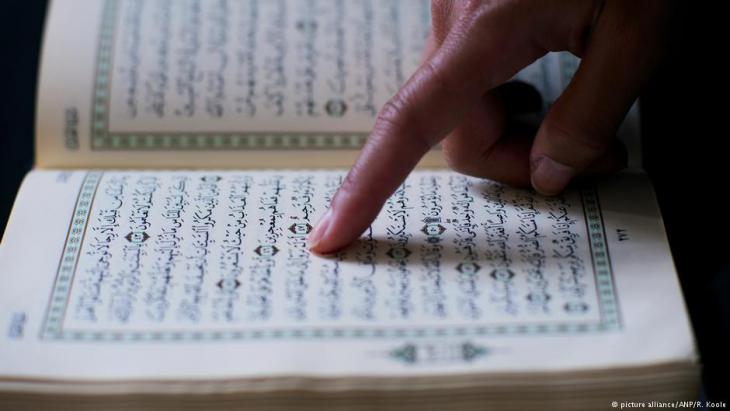Patterning nature

When did nature and animal conservation first become an issue for Muslims?
Muna Tatari: It has been growing in importance since the 20th century. On the one hand, there′s the intellectual challenge, generated by the idea that the great environmental crisis exists primarily because all three monotheistic religions have an exclusively human focus, to the detriment of the environment. And on the other, because people in majority-Muslim countries are experiencing the consequences of environmental damage first hand – for example water pollution or the logging of forests and soil erosion as a result of increasing industrialisation.
Does the Koran feature any verses into which one could read environmental protection?
Tatari: The existence of inanimate matter is ruled out by many passages in the Koran. Everything consists of animate matter and as such, everything also has a relationship to God.
This of course gives rise to a theological question: to what extent can we as humans intervene and destroy this possible relationship with God by behaving carelessly towards other communities, such as that of the animals, as described in the Koran? It's clearly a question of how these communities are valued.
Moreover, there are also a number of passages in which animals are seen to play key roles in the lives of the prophets. One example is the she-camel of the people of Saleh. The story makes an example of them, relating that owing to the camel′s maltreatment, the people have violated many ethical principles. In the Koran we find many initial points of reference for wide-ranging environmental ethics and a theology of sustainability.
In the light of this, are there any indications that the Prophet Muhammad led an exemplary life in terms of environmental awareness?
Tatari: The life story of the Prophet Muhammad reveals that he was very cautious in his use of resources. Of course, neither was he a rich man. But there is, for example, a traditional story that describes how he observed a person tipping the water left over from ritual washing prior to praying into the sand. The Prophet warned the person: "That is wasteful!" We learn from this that even in places where there are rivers and plenty of water flows, resources should always be used in moderation.

What approaches exist in Islamic theology regarding the treatment of the natural world?
Tatari: Islamic theology features two main approaches. On the one hand we have the view of Said Hossein Nasr, who said that man, nature and creation exist in harmonious balance. He saw the ecological crisis as stemming from the fact that there is a spiritual crisis – a spiritual crisis in which humanity increasingly perceives itself as being divorced from God and nature. Nasr sees the solution to the problem in a reorientation towards and commitment to God. And because God is also manifested in nature, this is also bound up with a re-spiritualisation of nature and thereby a mindfulness towards Nature.
His diagnosis: Humanity – even if divorced from God – is essentially seeking the transcendent and yearning for a sense of infinitude. But because this does not take the form of a religion, such striving for transcendence is exhausted by humanity′s insatiable consumerism. In principle, a sustainable interaction with nature can only work if humanity focuses on a "different wealth". For Nasr, this is the wealth of God, which manifests itself in nature and which, in turn, goes hand-in-hand with an appropriate measure of respect and preservation.
Farid Esack has developed a quite different approach. His starting point is that humanity is at the centre of a relational system – humans in relation to themselves, to their fellow human beings, to plants and animals, to creation itself and not least, to God. It is important to shape these relationships with fairness and dignity.
If the Koran says that plants and animals also form communities, that everything has a soul and a prayer for God, these are also facts that I must consider in the maintenance of my relationships. From his liberation-theological perspective, this is also about restoring the balance of certain repressive relationships. That means, the relationship with God also manifests itself in the fair and emancipatory relationship between humans and other creatures and nature itself.
Are there prophets in Islam who were particularly committed to the issues of species conservation and environmental protection?
Tatari: According to the Koran, Prophet Salomon had a close bond with horses. He also spoke to a bird and once held back a crowd of people to keep the path free for a swarm of ants. Looking at related extant literature, "Man and Animal Before the King of the Jinns" by the Ihkwan al-Safa (lit. the Brethren of Purity), is of particular interest.
In this book man and beast are presented in contest for God's recognition. The people claimed they could do this and that, whereas the animals protested that they could do the same – but much better. And God always agreed with the animals.
The fact is, people experience criticism time and again and a mirror is held up to their conduct through the practices of animals. It's a question of their arrogance, their perpetual transgression of boundaries. In the end it becomes apparent that there is one aspect that distinguishes humans from animals: that they are capable of having a considered relationship with God.
While animals have this intuitively and inherently, humans are capable of additional reasoned reflection. It's victory with a stale aftertaste. Humanity does indeed have something that distinguishes it from the animals. This should also serve as an incentive for humans to behave in a responsible manner in their interactions with nature, following its example and learning lessons from it.
Interview conducted by Ulrike Hummel
© Qantara.de 2017
Translated from the German by Nina Coon
